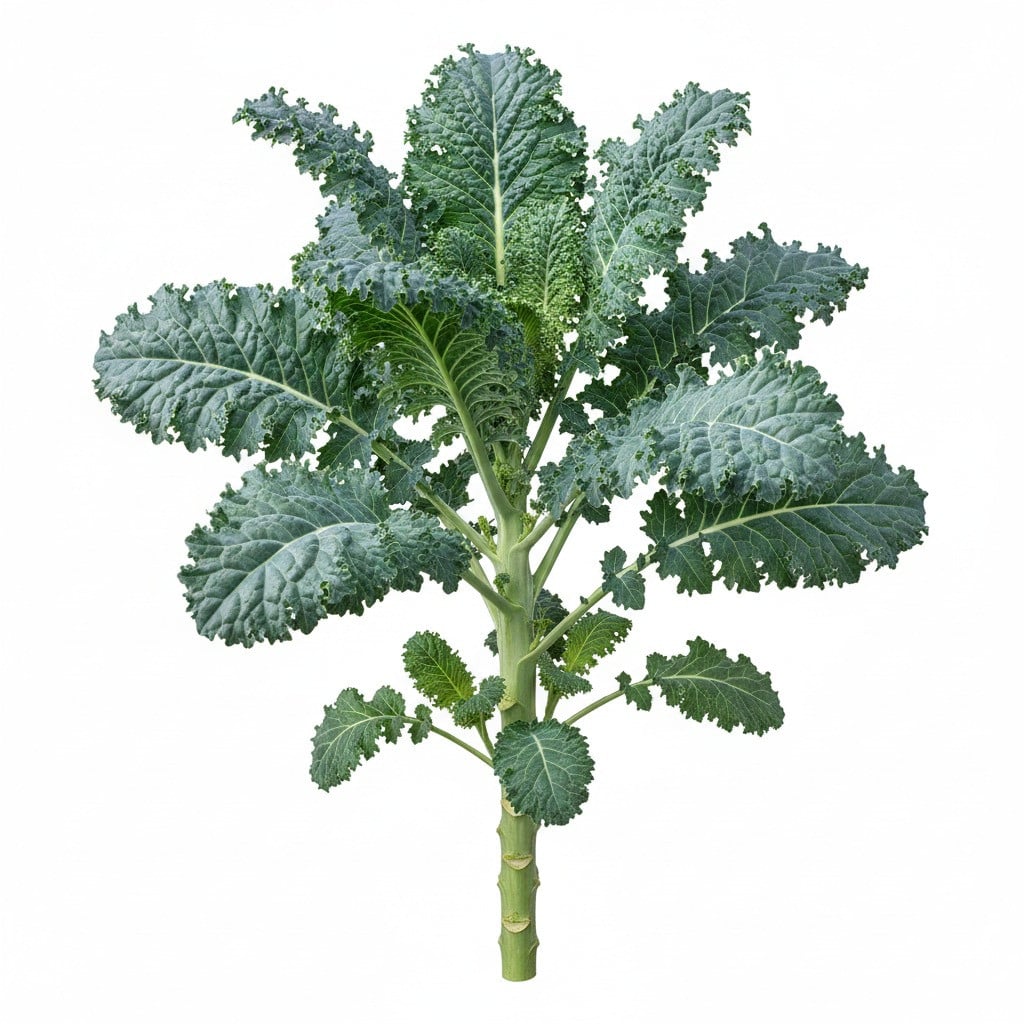Collard greens

Collard greens
Brassica oleracea var. ramosa
Plant family
Crucifers (Brassicaceae)
Cultivation Break
4 Years
Season Overview
Sowing
Harvest
Harvest
J
F
M
A
M
J
J
A
S
O
N
D
1ST YEAR
FOLLOWING YEARS
Details
Light requirement
Sunny
Water requirement
Moist
Soil
Medium (loamy)
Nutrient requirement
High
Plant distance
40 cm
Row spacing
60 cm
Seeding depth
Not specified
Instructions
Description
Collard greens is an umbrella term for some subspecies of the plant species vegetable cabbage (Brassica oleracea), which is grown as a vegetable but also as an ornamental because of its large, dark leaves. It strongly resembles kale, to which it is closely related. There are several varieties of collard greens, which are mainly cultivated in Brazil, Portugal, USA, Africa, Southeastern Europe and in India.
Origin:
Worldwide
Growing tips
Can theoretically be grown all year round. Cultivation similar to kale. The leaves taste best harvested after the first frost. Withstands frost well, except for very cold heavy frosts, can also withstand drought well at times. Propagation by division of shoots. Regular harvesting stimulates growth. If planting in May, cover the plantlets with a protective cultural net to protect them from pests. Incorporating algal lime before planting protects against cabbage hernia. A sprinkling of primary rock flour from aphids. When harvesting, leave the heart of the plant intact, then the leaves will grow back.
Companion Plants
Carrots
Celery (Celeriac / Celery root)
Celery (Celery)
Celery (Leaf celery / Chinese celery)
Chamomile
Chard
Chives
Dill
Garlic
Leeks
Lettuce (Common chicory)
Lettuce (Endive / Escarole / Erisée)
Lettuce (Lamb's lettuce)
Lettuce (Lettuce)
Lettuce (Oriental greens / Brown mustard)
Lettuce (Puntarelle / Cicoria di catalogna / Cicoria asparago)
Lettuce (Radicchio / Italian chicory)
Lettuce (Sugar loaf)
Onion
Onion (Spring onion)
Potato
Spinach (Summer)
Spinach (Winter)
Tagetes / Marigolds
Antagonistic Plants
Aubergine / Eggplant
Bean (Dwarf bean)
Bean (Runner bean)
Beetroot
Broccoli
Broccoli raab / Stem cabbage / Cima di rapa
Brussels sprouts
Cabbage (Cabbage)
Cabbage (Pointed cabbage)
Cabbage (red cabbage)
Cabbage (Savoy cabbage)
Cauliflower
Collard greens (Kale)
Collard greens (Tuscan kale / Dinosaur kale / Palm tree kale)
Cucumber / Gherkin
Fennel
Florence fennel / Finocchio
Gemüsekohl - Flower Sprouts / Kohlröschen
Gemüsekohl - Futterkohl
Gemüsekohl - Kai-Lan / Chinesischer Brokkoli
Gemüsekohl - Rippenkohl / Portugiesischer Kohl
Gemüsekohl - Wildkohl / Urkohl
Kohlrabi / German turnip / Turnip cabbage
Mustard
Napa cabbage / Chinese cabbage
Oil radish / Fodder radish
Okra
Pea
Pepper / Paprika
Radish
Radishes
Rutabaga / Swedish turnip
Strawberry
Tomato (Bush tomato)
Tomato (Cocktail bush tomato)
Tomato (Cocktail Stake Tomato)
Tomato (Stake tomato)
Turnip
Turnip-rooted chervil
Diseases
Powdery mildews
Black spot of roses
Grey mold
Club root of cabbage
Pests
Flea beetles
Caterpillars
Land snails
Cabbage white
Cabbage fly
Cabbage heart midge
Aphids
Voles